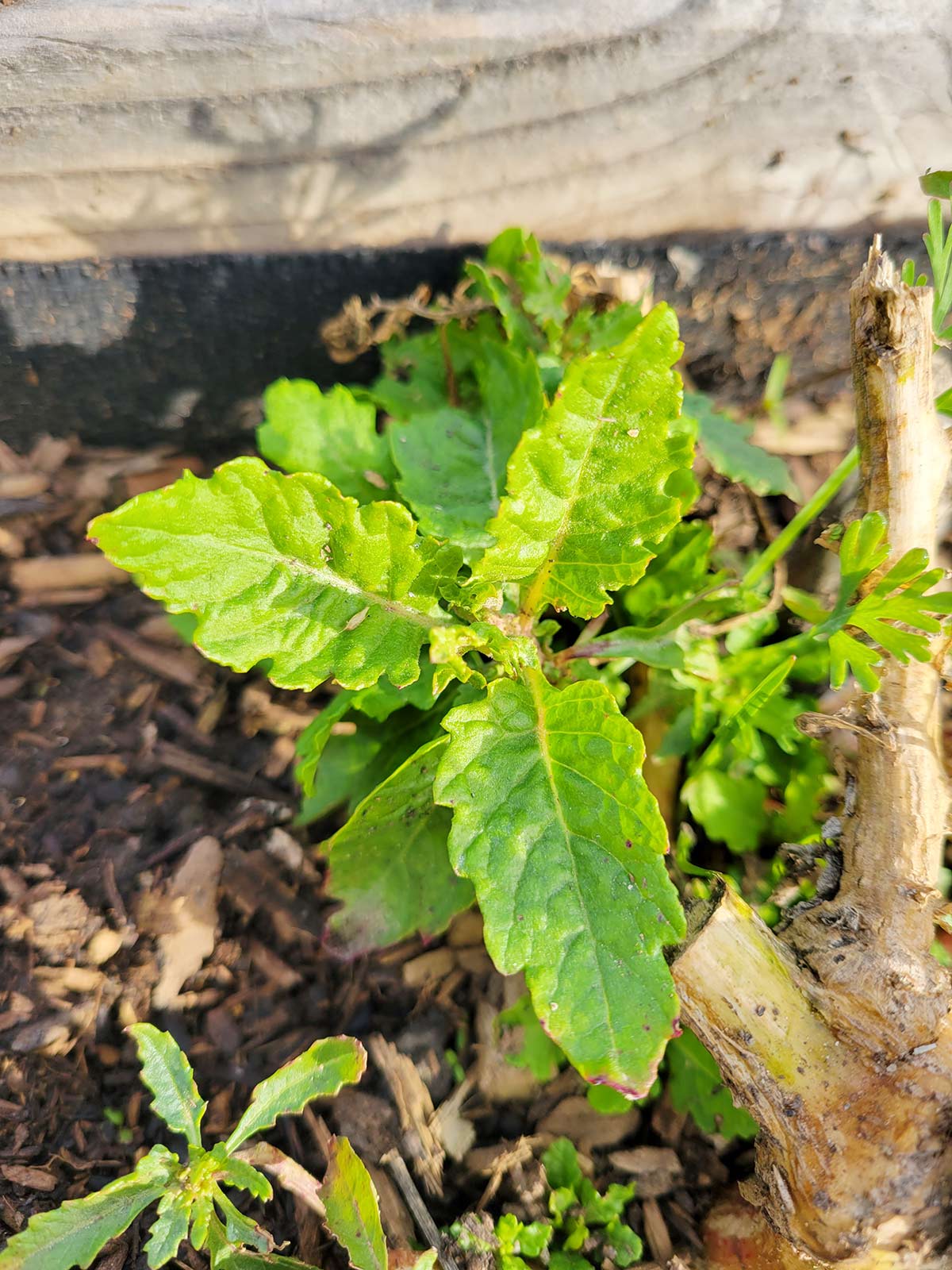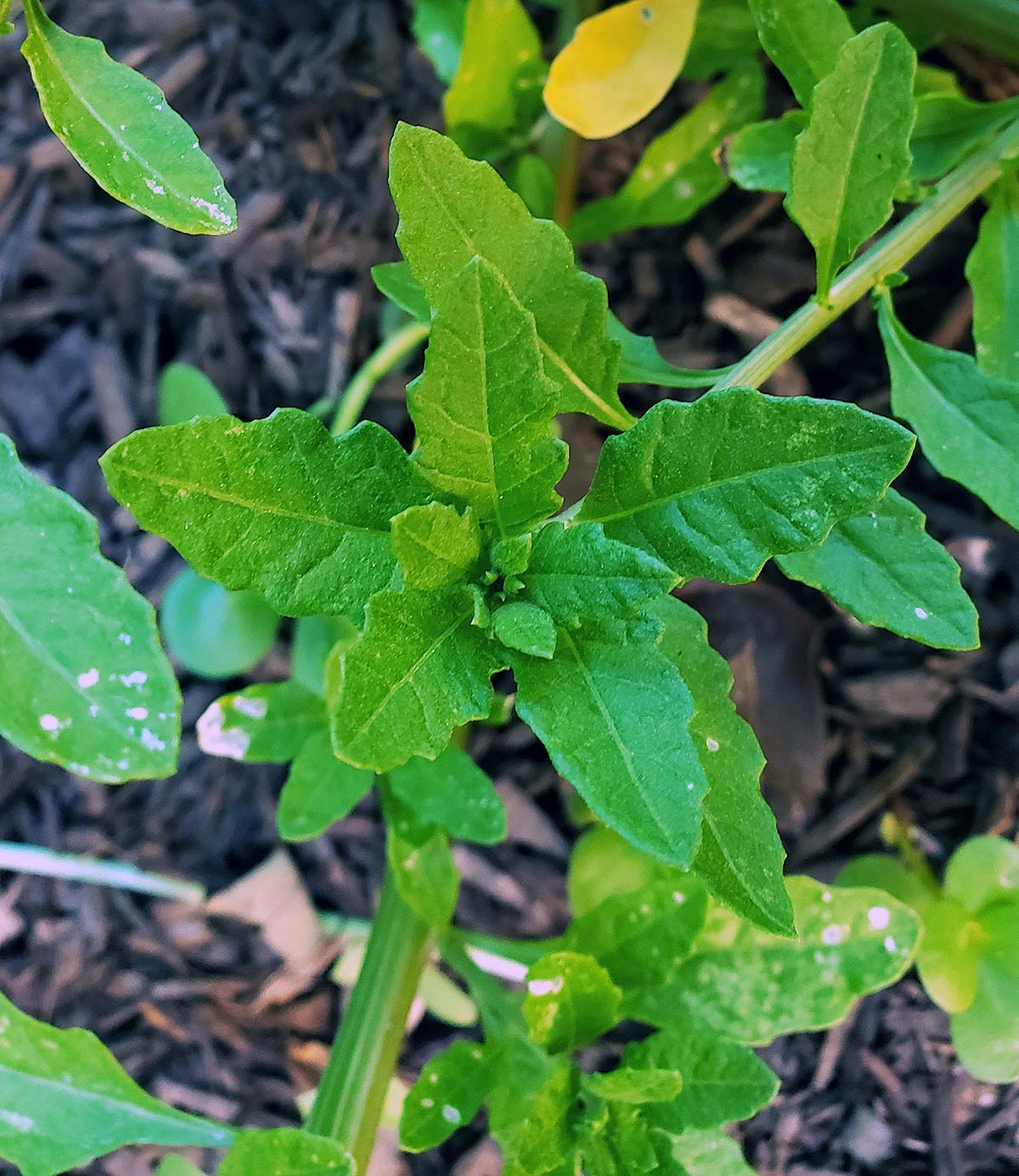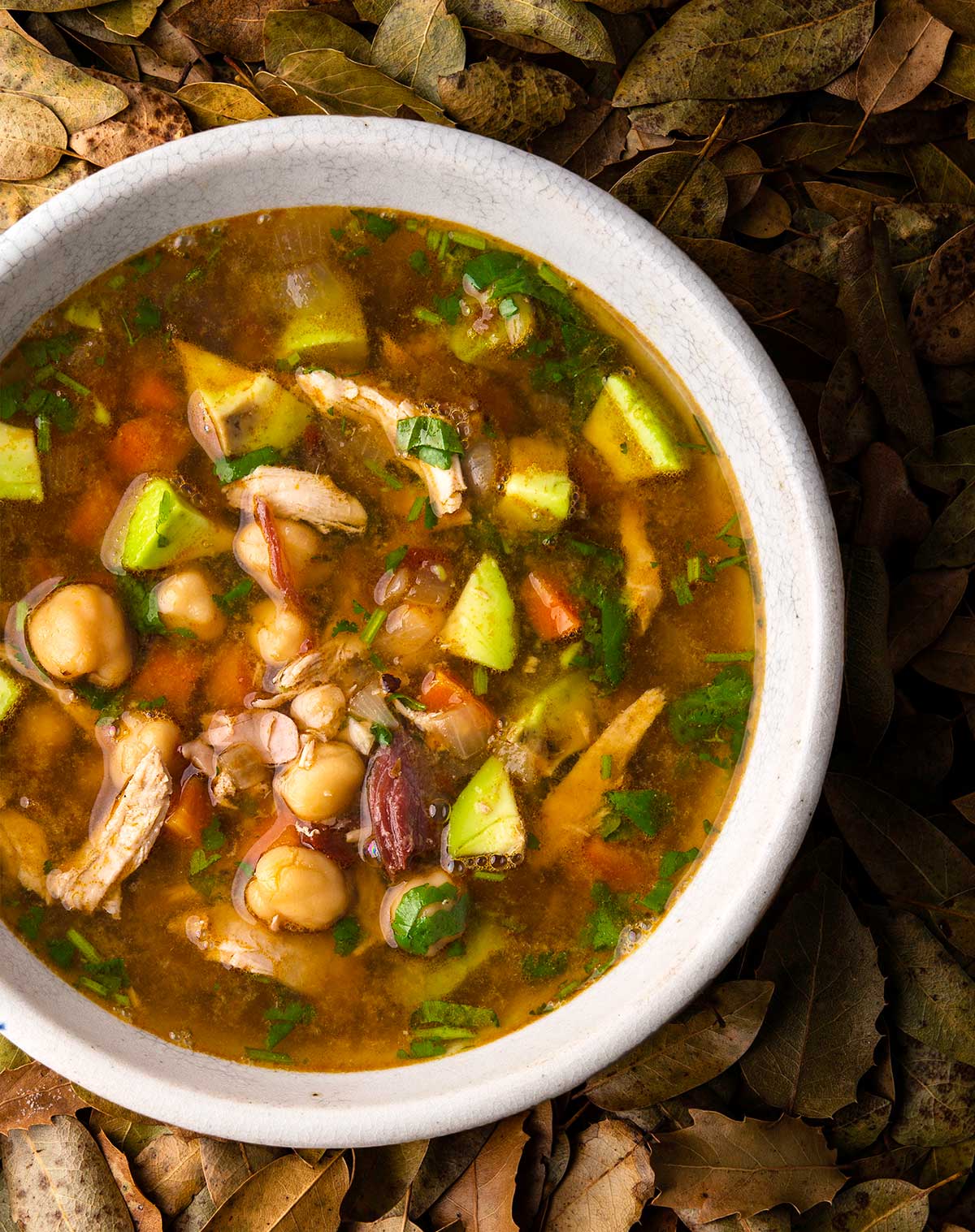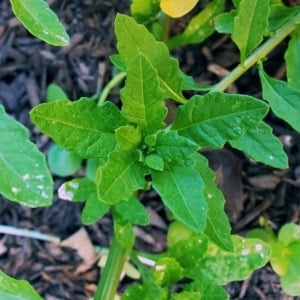Epazote: Mexico’s Mystery Herb
July 25, 2019 | Updated February 11, 2021
As an Amazon Associate I earn from qualifying purchases.
If you think cilantro is a polarizing ingredient, allow me to introduce you to epazote, also known as wormseed.
Pronounced “ep-ah-ZOH-tay,” Dysphania ambrosioides is native from southern Mexico to northern South America, and now grows wild in all but a few northern states. It has been introduced into much of eastern Canada. There is some debate over whether the plant came to the United States through human action or not.

Regardless, you will find wild epazote mostly in disturbed places, like the edges of farm fields, gardens, vacant lots, old properties and the like — usually below 4000 feet in elevation, although I once saw some growing out of a sidewalk crack in Denver.
It is not, as some people think, the same plant as Mexican oregano, not even remotely.
Epazote likes hot weather, but will overwinter in places that don’t get much of a frost, like where I live near Sacramento. It is very easy to grow, bordering on invasive. When I can’t find it on my local foraging travels, I grow a few plants in my yard. (You can buy the seeds here.)
If you find yourself with too much epazote, pick some after the dew has dried on a sunny morning and dry it in the shade in a hot, breezy place. A dehydrator at its lowest setting is good, but even better is a hot garage in summer.
You can’t use the oven, sorry; it’s too hot and you’ll cook out all the aroma. Likewise, I do not recommend that you buy store-bought dried epazote; it is always brown and sad.

Or, you can skip all this and go to your nearest Mexican market, which will almost always have it fresh on sale. And if you are in Texas, I’ve seen it for sale at H.E.B. supermarkets.
And you don’t need much. In fact, the epazote salsa recipe I have below is about as much as you ever want to use. In very high amounts, epazote can be toxic: It is a vermifuge of the highest order, which means it will kill any intestinal parasites you might have living in your innards.
Alas, the amount you need to kill them is borderline toxic, so if you are reading this because you have a tapeworm, or as I like to call them, “weight loss buddies,” go to the doctor for a safer vermifuge; and yes, I like saying that word. It amuses me.
But this is not why epazote is polarizing. People either love it or hate its aroma, which I liken to the smell of ozone; think asphalt after a thunderstorm. My brother Fred thinks is smells like varnish, but others wax rhapsodic about notes of mint, tarragon and citrus.
I don’t pick up those olfactory notes, but I find the weird smell of epazote beguiling. Whenever I brush up against the plant in my garden, it lets me know it’s there with that waft of creosote-ozone… no se que…
Its flavor follows its aroma. Bitter if you start chewing on a bunch of leaves raw, epazote melds with Mexican dishes in a way only its use over millennia will do. Our word epazote comes from the Aztec word for the herb, which translates to “skunky sweat.” Seriously.
If you were to cook epazote in only one way, it would be in a pot of beans. Not only does it add flavor, but there are compounds in the herb that help break down the proteins in beans — proteins that are normally broken down by your intestinal flora. And when that happens, you start farting. So yeah, add epazote to your beans and you’ll fart less.
In all cases, if you want to taste and smell epazote, add it in the last 10 minutes of cooking.
You’ll also see epazote tucked in, here and there, to Mexican dishes all over the spectrum. I use it in my pozole verde, in another great Mexican soup I do with quail, my green chile enchiladas, and, most often in my base recipe for salsa verde.

A single leaf in the fun Mexican “hot pockets” called tetelas, which are also filled with cheese and refried beans, is indispensable. It also plays a part in the ancient Mexican sauce chirmol, which is an ancestor to the better known moles.
The thread is, largely, green dishes. You will see epazote in some moles, and I include it in a few “red” dishes, but only in amounts you can’t detect — unless it’s not there.
The epazote salsa below is different. In this salsa, epazote plays co-star to roasted tomatillos and serranos. It is a fantastic salsa for both chips and for fish, poultry, rabbit or pork.
It will keep a few weeks in the fridge, and it will freeze OK; when it thaws you’ll see some separation, but you can vigorously stir it back to life.
Salsa de Epazote
Ingredients
- 1 pound tomatillos, husked and sliced in half
- 1/2 white onion, cut in thick slices
- 3 garlic cloves, unpeeled
- 2 green onions, chopped
- 1 teaspoon ground cumin
- 2 serrano chiles, roasted, peeled and deseeded
- 1/2 cup chopped cilantro
- 1/4 cup chopped fresh epazote
- Salt
Instructions
- Turn your broiler on high. Arrange the tomatillos, onion and garlic on a baking sheet and set under the broiler until about halfway charred. Keep an eye on it, as this can take anywhere from 5 minutes for dryish tomatillos to 15 for wet ones.
- Meanwhile, char the serranos over a gas burner, holding them with tongs. This is a better method for charring your serranos because they don't cook fully this way, but if this bothers you, put the serranos under the broiler with everything else.
- Remove the garlic and peel it when it's cool enough to touch. Remove the skins and seeds from the serranos. Move everything into a blender, along with all the other ingredients. Puree. Add salt to taste.
Nutrition
Nutrition information is automatically calculated, so should only be used as an approximation.






Why oh why would you add cilantro to the salsa. Epazote flavor will be cancelled out by the devils weed cilantro. I cook with episode a lot and use it in a lot of dishes instead of cilantro, as I am allergic to cilantro. My mother in law said cilantro only goes in Pico de Gallo salsa not green or other salsas. I make my requires with e paste also.
Is this the secret ingredient in the Mexican restaurant salsa? Because I have tried everything to make salsa taste like the restaurant kind, and nothing does. If anyone knows please let me know. Thank you!
S: Maybe? I mean, there are 1000 salsa recipes. Some use epazote. Many don’t. Really hard to tell.
A little help Hank? You have written about a “weed” that grows in Mexico that is really pungent and is edible. I am in Tucson and when I read it, I recognized the plant that grows in the shade around my house. Thin, hardly any leaves, smells incredibly strong (in a good way) when crushed or stepped on. Not a lot to go on, sorry. You solve this one and I owe you a bag of elk jerky, or javelina burger.
I’d need a picture.
I bought a plant last year, put it in my garden and it immediately went to seed. I wasn’t paying attention to it at all. This spring, I literally have a carpet of epazote growing. I’m planning to give away what I can or I will have to dig it all out but leave the largest plants.
If you grow it, know it is invasive! So make sure you catch those seeds or you will have a green carpet of epazote too.
Holly: You are not wrong!
I love Epazote aImost in everything. I like alot in black beans. I chop up, onion, chile serranos and epazote, fry it alittle in oil then pour black beans, simmer on low. I mashed them up and serve as a taco with some queso fresco. Soooo Gooood!!!
Hey Hank! I just started growing this in my garden recently and was looking for good uses. I read the article and used it in my enchiladas verdes last night. great tips. Then I was going through this page again and realized you wrote this. So glad it was you. I have a copy of “Buck, Buck Moose”. Shortly after doing so, on twitter, you answered a question I had about using milk for liver. You did so very quickly and I appreciated that. I’ve used many of your recipes from the book. Venison barbacoa is a fave. Thanks again and be well
Hank, my mom uses epazote in her pozole. so delicious ? I came across your article by trying to see what epazote translates in english. it’s a very good article and my mom likes your salsa recipe.
Thanks for this post. I was introduced to epazote in Oaxaca in the early 1990’s as an ingredient in cooking black beans, then proceeded to grow it in western Washington state. It self-seeds here also. I have dried it and it will keep for several years. I’ll have to try it as a flavor ingredient in your salsa verde. Love the creosote flavor.
Thank you for this post. I had heard of Epazote, and even contemplated growing some to see what it tasted like. My surprise in reading your post was in reading the Latin name (Dysphania ambrosioides). I had come across this species last year as a pioneer in a salt marsh restoration project I was monitoring (sand was placed on top of the marsh to raise the elevation for new marsh establishment ahead of sea level rise). I had not encountered Dysphania before, and was unfamiliar with the seedlings. Finally the flowers revealed the species’ identity. I pondered the reference of the Anglo common name of Mexican tea, and read of the species’ impact on “vermifuge”, but did not make the connection to “Epazote”. The substrate of the newly created habitat was sand, and the seeds apparently arrived via water, as over wash from the surrounding salt pond during storm events, indicating that the species also has a degree of tolerance to salinity. Now I know where to look for some to try with beans, and to make this salsa! Thank you. Very skunky smell.
Good writeup on Epazote, Hank. I have seen it growing wild all around the Denver Metro Area. I have a variety purchased from Natice Seeds Search in Tucson that they claimed was gathered in the mountains of the Tarahumara in Northern Mexico although the traditional regions for it’s use is Oaxaca. I only say this because the herb has changed it’s aroma and taste after self sowing for more than 25 years in the Denver Front Range climate zone 4b as it comes up each year unassisted in my garden. In other words this herb may taste very different where you live vs. the one gathered in various Mexican regions where it is used in food prep. I use it fresh in the summer and fall and prefer a dried Epazote purchased from a Oaxaca grower for off season culinary use as it has a much stronger creosote flavor when cooked.
I don’t believe that Epazote can break down proteins as it is NOT an enzyme but a volatile terpene class flavoring used during the end of cooking. It is traditionally not cooked for long in the dish as it looses flavor very quickly when heated. Epazote terpenes act on intestinal microflora to eliminate or reduce the population of methanogens and hydrogen producing bacteria that can grow in the presence of hard to digest bean sugars. These are carbohydrates like rhaffinose (3 simple sugars linked together in a form we can’t digest) and the four sugar carbohydrate called stachyose that we can’t normally digest because we lack an enzyme needed to break it down but bacteria in our gut can do it easily. The problem is that some of these bacteria create methane and hydrogen gas in the presence of these complex sugars. So Epazote helps you to eliminate the gas producing bacteria that consume these tri and tetra saccharides that can cause gas by allowing other non-gas producing microbes to eat them.
It is also my understanding that cases of Epazote toxicity have been caused by people consuming the Epazote essential oil which is highly concentrated and highly toxic in large doses. The raw herb is not nearly as dangerous as the essential oil and this is true of many essential oils now so popular for aromatherapy and massage.
David: Thanks a heap, that is great information!
How about dried epazote. Is it as useful in recipes?
Susan: Sort of. Typical dried epazote isn’t very good. But if you dry it gently yourself it holds flavor well. I dry in a dehydrator at 100F, or put the sprigs in my hot garage in summer. Always shade, and air movement is key.
I find the best way to prepare epazote is to pick it fresh, then dry it slowly for two or three days, shred it ‘chiffonade’ as the French say, then drop it into a compost bin. 🙂
Thanks so much for the Epazote information! I have it dried but fresh sounds best with more than enough information to increase my Mexican culinary skills ?
Finally, a good explanation for Epazote use in recipes. I grew this a few times many years ago and used a bit of it in some Mexican recipes, always aware of consuming too much, often not using enough to appreciate the interesting, unique tone of this herb. Growing every year is best for fresh quality.
Awesome article as always Hank, you should drop an ebook or short Mexican recipes with Game meat book.